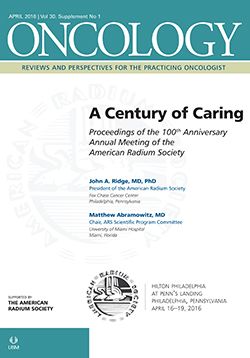(S029) Dosimetric Comparison Between Vaginal Balloons and Rectal Retractors in Intracavitary Brachytherapy
There is no significant difference between D2cc%, D1cc%, and D0.1cc% to the rectum and sigmoid colon for VBs and RRs. There was a significant difference in ICRU% rectal point dose between VBs and RRs, but differences in clinical outcome, if present, will require additional investigation.
Richard Pearlman, James Galle, MD, Huisi Ai, PhD, John Cox, MD; University of South Alabama College of Medicine; Indiana University School of Medicine
PURPOSE: Brachytherapy is required for dose escalation in gynecologic cancers to facilitate definitive treatment while attempting to spare nearby organs at risk (OARs). To decrease dose to these OARs, different devices and techniques have been utilized to increase the distance between the source and respective OAR. Traditionally, gauze has been utilized to decrease dose to the rectum. More recently, vaginal balloons (VBs) and rectal retractors (RRs) have been demonstrated as alternative methods. To date, rectal dosimetric comparisons have only been made between gauze packing and either VBs or RRs. The purpose of our study was to compare rectal dosimetry between VBs and RRs.
METHODS: We reviewed brachytherapy plans for 73 implants (tandem and ovoid) in 27 consecutive patients. A VB or an RR was used for posterior displacement of the rectum. Rectal and sigmoid doses were calculated as a percentage of each fraction’s prescription dose.
RESULTS: Rectal D2cc%, D1cc%, and D0.1cc% were 40% ± 12% (VB) and 43% ± 13% (RR) (P = .28); 46% ± 16% (VB) and 46% ± 12% (RR) (P = .75); and 52% ± 18% (VB) and 53% ± 13% (RR) (P = .65), respectively. Sigmoid D2cc%, D1cc%, and D0.1cc% were 67% ± 13% (VB) and 62% ± 14% (RR) (P = .13); 72% ± 16% (VB) and 72% ± 20% (RR) (P = .90); and 89% ± 21% (VB) and 86% ± 23% (RR) (P = .51), respectively. International Commission of Radiation Units and Measurements percent (ICRU%) rectal point doses were 46% ± 17% (VB) and 59% ± 9% (RR) (P = .0001).
CONCLUSION: There is no significant difference between D2cc%, D1cc%, and D0.1cc% to the rectum and sigmoid colon for VBs and RRs. There was a significant difference in ICRU% rectal point dose between VBs and RRs, but differences in clinical outcome, if present, will require additional investigation.
Proceedings of the 98th Annual Meeting of the American Radium Society - americanradiumsociety.org

Targeted Therapy First Strategy Reduces Need for Chemotherapy in Newly Diagnosed LBCL
December 7th 2025Lenalidomide, tafasitamab, rituximab, and acalabrutinib alone may allow 57% of patients with newly diagnosed LBCL to receive less than the standard number of chemotherapy cycles without compromising curative potential.